
How to Use 12v to 5v Convertor: Examples, Pinouts, and Specs
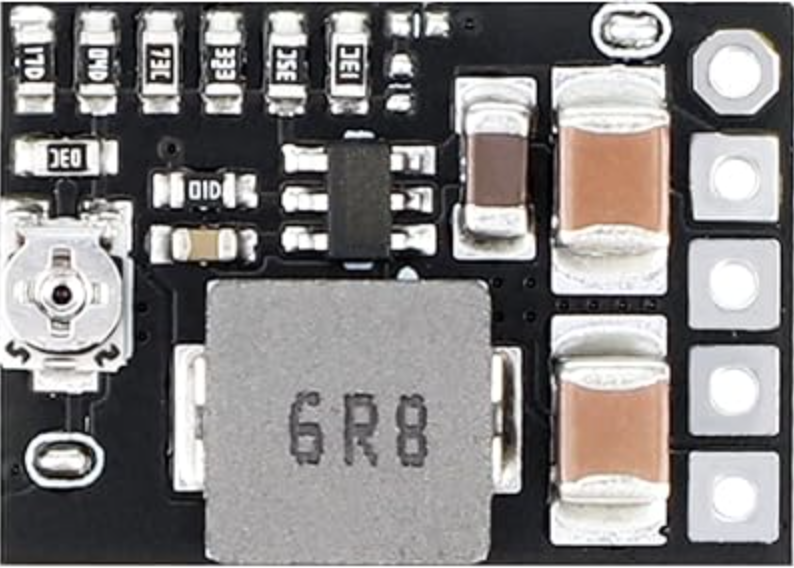
 Design with 12v to 5v Convertor in Cirkit Designer
Design with 12v to 5v Convertor in Cirkit DesignerIntroduction
The Drok 12V to 5V Converter (Part ID: 5v12v) is a compact and efficient step-down voltage regulator designed to convert a 12V input voltage to a stable 5V output. This component is widely used in applications where 5V devices, such as microcontrollers, sensors, or USB-powered devices, need to be powered from a 12V source, such as a car battery or solar panel system.
Explore Projects Built with 12v to 5v Convertor
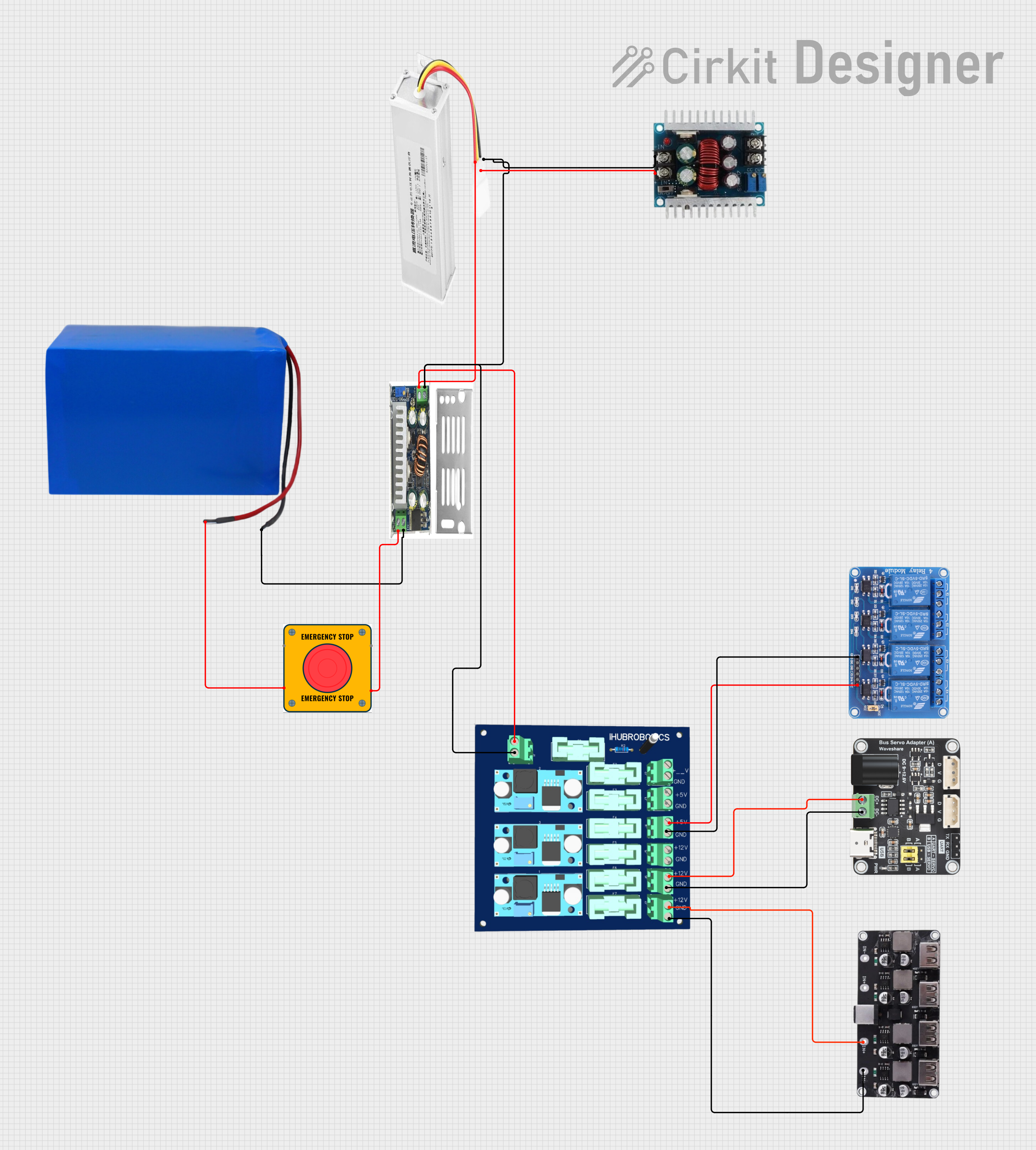
 Open Project in Cirkit Designer
Open Project in Cirkit Designer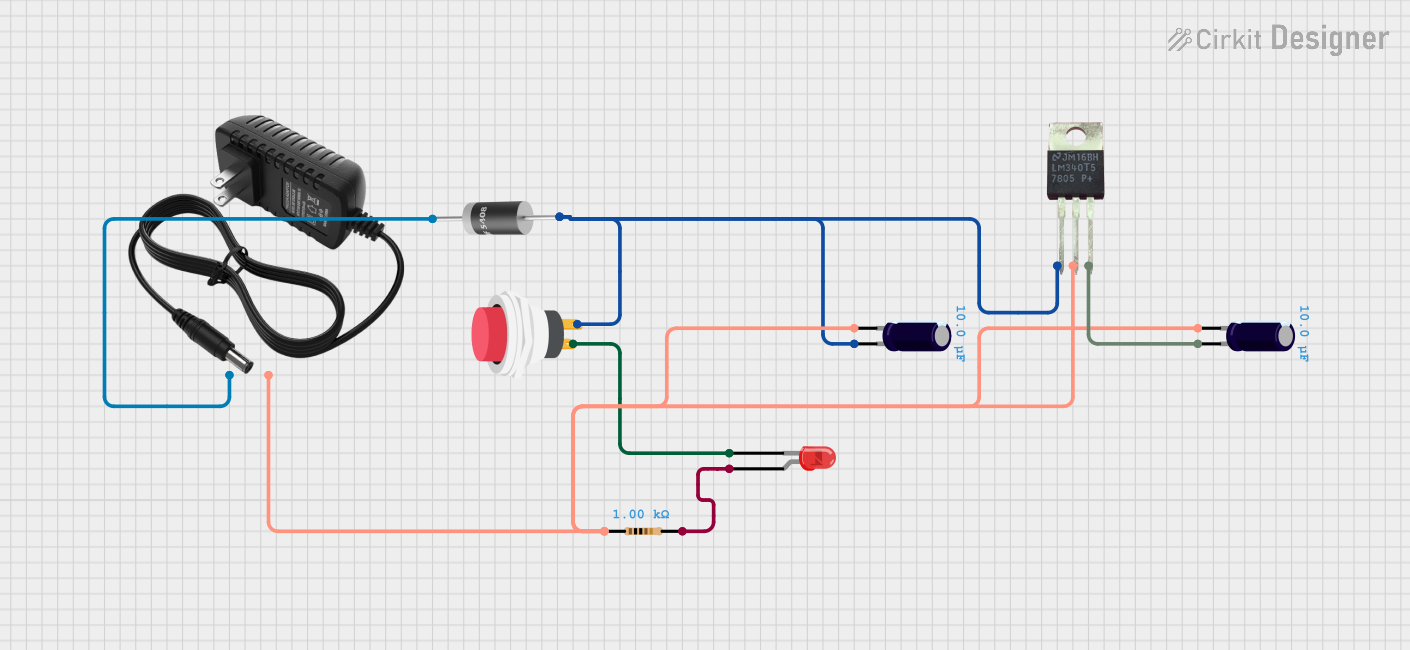
 Open Project in Cirkit Designer
Open Project in Cirkit Designer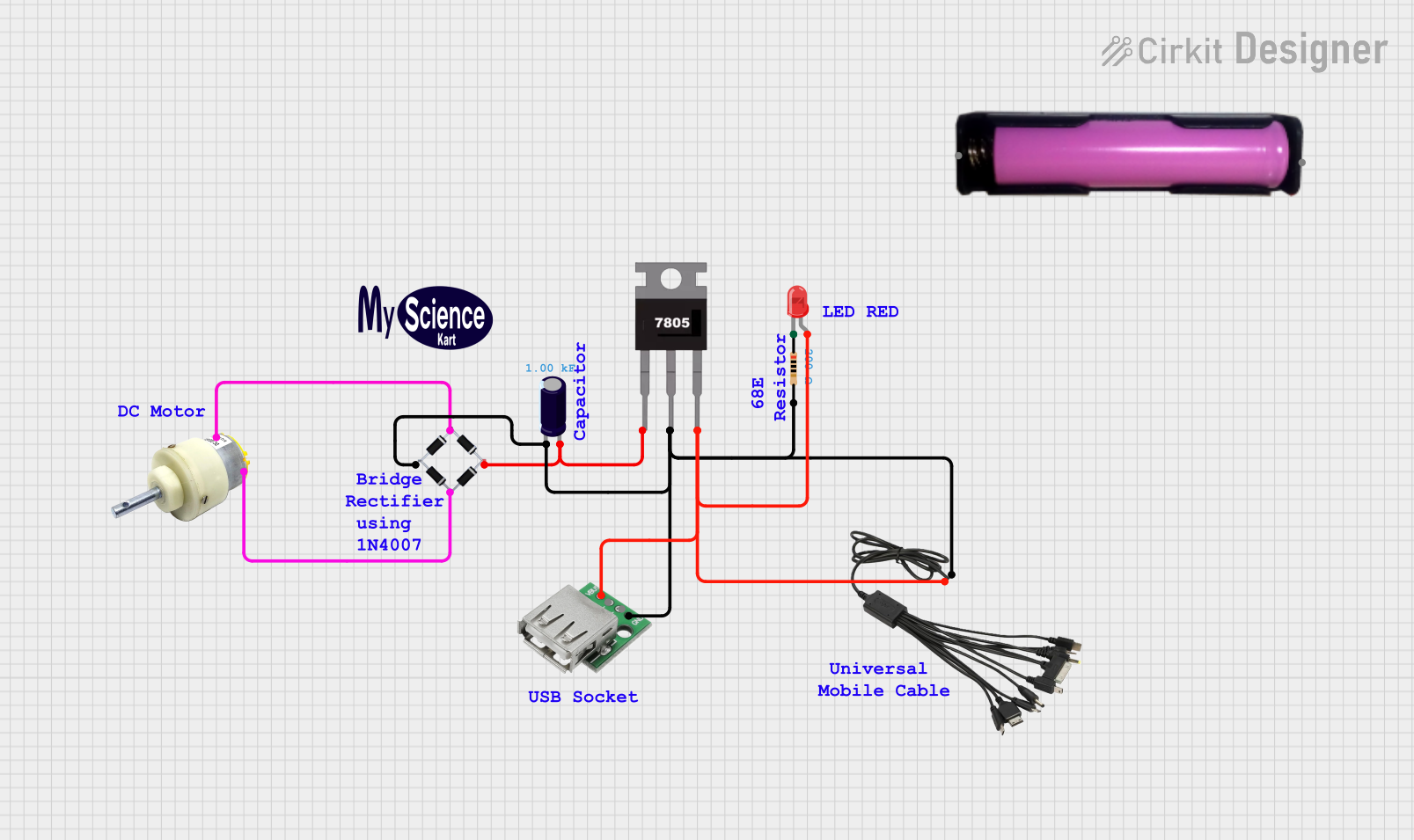
 Open Project in Cirkit Designer
Open Project in Cirkit Designer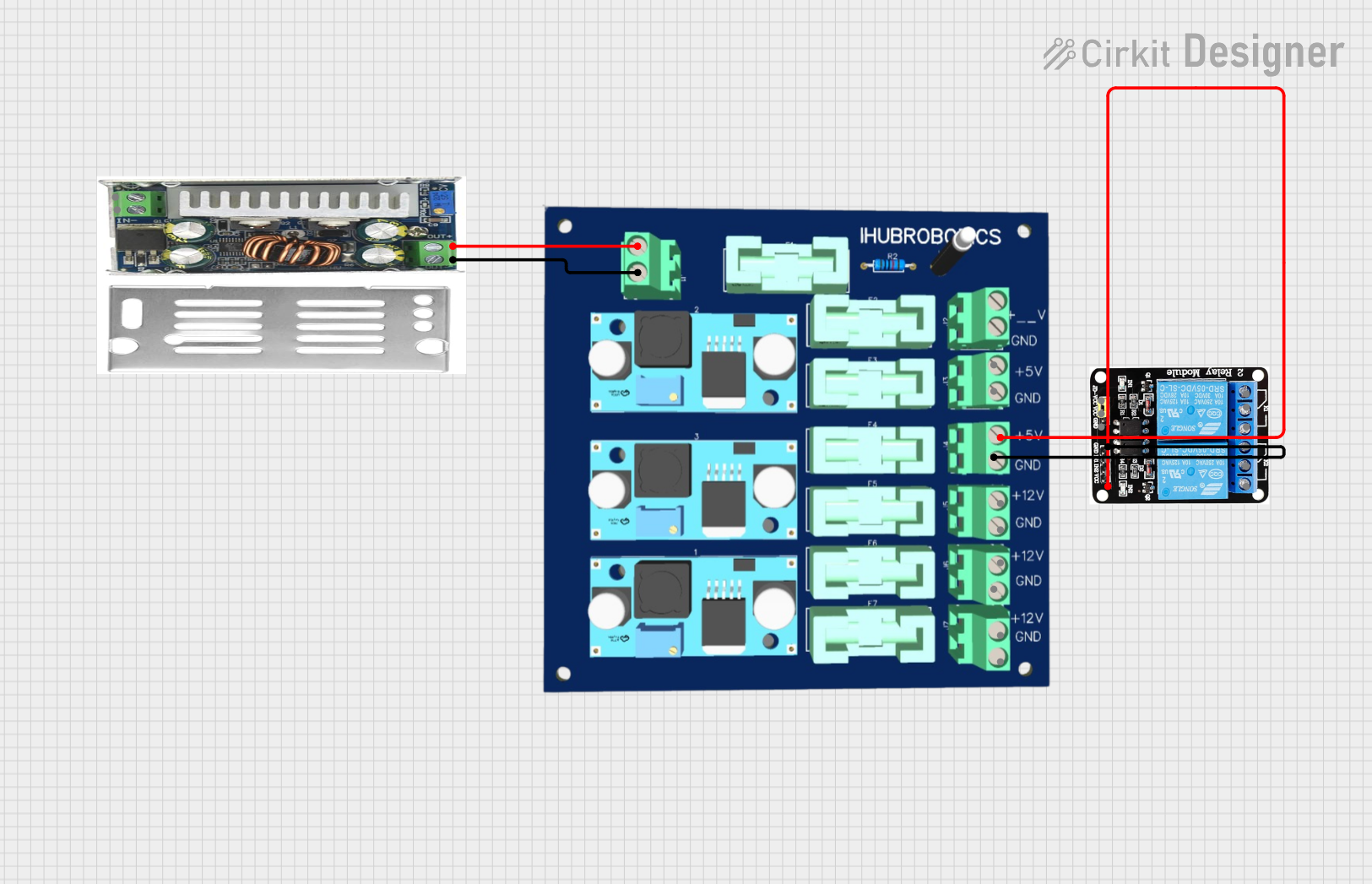
 Open Project in Cirkit Designer
Open Project in Cirkit DesignerExplore Projects Built with 12v to 5v Convertor

 Open Project in Cirkit Designer
Open Project in Cirkit Designer
 Open Project in Cirkit Designer
Open Project in Cirkit Designer
 Open Project in Cirkit Designer
Open Project in Cirkit Designer
 Open Project in Cirkit Designer
Open Project in Cirkit DesignerCommon Applications and Use Cases
- Powering 5V microcontrollers (e.g., Arduino, Raspberry Pi) from a 12V source.
- Supplying power to USB devices in automotive or industrial environments.
- Voltage regulation in DIY electronics projects.
- Powering 5V sensors, relays, or communication modules in embedded systems.
Technical Specifications
The following table outlines the key technical details of the Drok 12V to 5V Converter:
| Parameter | Specification |
|---|---|
| Input Voltage Range | 8V to 22V |
| Output Voltage | 5V ± 0.1V |
| Maximum Output Current | 3A |
| Efficiency | Up to 96% |
| Operating Temperature | -40°C to +85°C |
| Dimensions | 46mm x 27mm x 14mm |
| Weight | 20g |
Pin Configuration and Descriptions
The Drok 12V to 5V Converter has four pins or wires for input and output connections. The table below describes each pin:
| Pin/Wire | Description |
|---|---|
| VIN+ | Positive input voltage (8V to 22V) |
| VIN- | Negative input voltage (ground) |
| VOUT+ | Positive output voltage (5V) |
| VOUT- | Negative output voltage (ground) |
Usage Instructions
How to Use the Component in a Circuit
- Connect the Input Voltage:
- Attach the VIN+ pin to the positive terminal of your 12V power source.
- Connect the VIN- pin to the ground terminal of your power source.
- Connect the Output Voltage:
- Attach the VOUT+ pin to the positive terminal of your 5V device.
- Connect the VOUT- pin to the ground terminal of your 5V device.
- Verify Connections:
- Double-check all connections to ensure proper polarity and avoid short circuits.
- Power On:
- Turn on the 12V power source. The converter will step down the voltage to 5V and supply it to the connected device.
Important Considerations and Best Practices
- Heat Dissipation: Ensure adequate ventilation or heat sinking if the converter operates near its maximum current (3A) for extended periods.
- Input Voltage Range: Do not exceed the specified input voltage range (8V to 22V) to avoid damaging the component.
- Polarity Protection: Double-check the polarity of input and output connections to prevent reverse polarity damage.
- Load Requirements: Ensure the connected 5V device does not exceed the maximum output current of 3A.
Example: Using with an Arduino UNO
The Drok 12V to 5V Converter can be used to power an Arduino UNO from a 12V source. Below is an example circuit and Arduino code:
Circuit Connections
- Connect the VIN+ pin of the converter to the positive terminal of a 12V battery.
- Connect the VIN- pin to the negative terminal of the battery.
- Connect the VOUT+ pin to the 5V pin of the Arduino UNO.
- Connect the VOUT- pin to the GND pin of the Arduino UNO.
Arduino Code Example
// Example code to blink an LED connected to pin 13 of the Arduino UNO
// Ensure the Arduino is powered via the 5V output of the Drok converter
void setup() {
pinMode(13, OUTPUT); // Set pin 13 as an output pin
}
void loop() {
digitalWrite(13, HIGH); // Turn the LED on
delay(1000); // Wait for 1 second
digitalWrite(13, LOW); // Turn the LED off
delay(1000); // Wait for 1 second
}
Troubleshooting and FAQs
Common Issues Users Might Face
No Output Voltage:
- Cause: Incorrect input connections or insufficient input voltage.
- Solution: Verify that the VIN+ and VIN- pins are connected correctly and that the input voltage is within the 8V to 22V range.
Overheating:
- Cause: Operating near the maximum current limit (3A) without proper heat dissipation.
- Solution: Add a heat sink or improve ventilation around the converter.
Output Voltage Fluctuations:
- Cause: Input voltage instability or excessive load on the output.
- Solution: Ensure the input voltage is stable and the load does not exceed 3A.
Device Not Powering On:
- Cause: Reverse polarity or loose connections.
- Solution: Double-check all connections and ensure correct polarity.
Solutions and Tips for Troubleshooting
- Use a multimeter to measure the input and output voltages to confirm proper operation.
- If the converter is not functioning as expected, disconnect all loads and test the output voltage with no load.
- For automotive applications, consider adding a fuse on the input side to protect against voltage spikes.
By following these guidelines, the Drok 12V to 5V Converter can be effectively integrated into a wide range of electronic projects and applications.